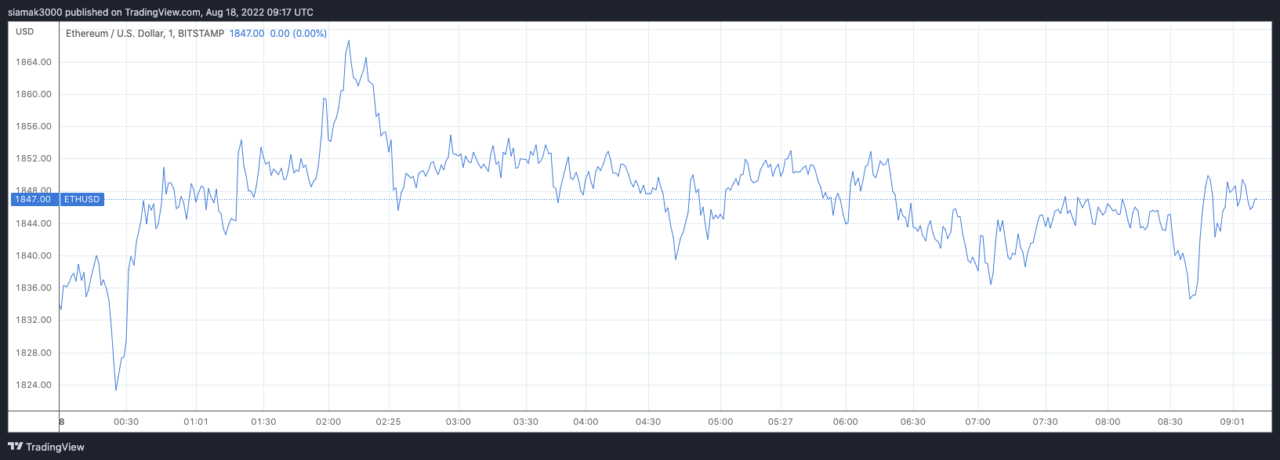On Tuesday (August 16), Arthur Hayes, Co-Founder and former CEO of BitMEX, shared his thoughts on Ethereum’s upcoming “Merge” protocol upgrade, which is when the Ethereum network is making the transition from proof-of-work (PoW) to proof-of-stake (PoS).
Here is how Ethereum Foundation explains the Merge, which is expected to take place around September 15:
“The Merge represents the joining of the existing execution layer of Ethereum (the Mainnet we use today) with its new proof-of-stake consensus layer, the Beacon Chain. It eliminates the need for energy-intensive mining and instead secures the network using staked ETH. A truly exciting step in realizing the Ethereum vision – more scalability, security, and sustainability.
“It’s important to remember that initially, the Beacon Chain shipped separately from Mainnet. Ethereum Mainnet – with all it’s accounts, balances, smart contracts, and blockchain state – continues to be secured by proof-of-work, even while the Beacon Chain runs in parallel using proof-of-stake. The approaching Merge is when these two systems finally come together, and proof-of-work is replaced permanently by proof-of-stake.
“Let’s consider an analogy. Imagine Ethereum is a spaceship that isn’t quite ready for an interstellar voyage. With the Beacon Chain, the community has built a new engine and a hardened hull. After significant testing, it’s almost time to hot-swap the new engine for the old mid-flight. This will merge the new, more efficient engine into the existing ship, ready to put in some serious lightyears and take on the universe.“
Anyway, on Tuesday, Hayes published a blog post (titled “ETH-flexive”), in which he talked about the consequences of a successful and a failed Merge event:
“If the merge is successful, there is a positive reflexive relationship between the price and the amount of currency deflation. Therefore, traders will buy ETH today, knowing that the higher the price goes, the more the network will be used and the more deflationary it will become, driving the price higher, causing the network to be used more, and so on and so forth. This is a virtuous circle for bulls. The ceiling is when all of humanity has an Ethereum wallet address.
“If the merge is not successful, there will be a negatively reflexive relationship between the price and the amount of currency deflation. Or, to put it another way, there will be a positively reflexive relationship between the price and the amount of currency inflation. Therefore, in this scenario, I believe traders will either go short or choose not to own ETH.
“There is a floor to this relationship in that the network is the longest operating decentralised network. ETH hit a very large marketcap without a merge narrative. The most popular dApps are built using Ethereum, and Ethereum also possesses the largest number of developers of any layer-1 chain. In light of that, and as I mentioned in my previous essay “Max Bidding”, I believe that ETH won’t go lower than the $800 to $1,000 prices it experienced during the TerraUSD / Three Arrows crypto credit meltdown.“
According to data by TradingView, on Bitstamp, currently (as of 9:17 a.m. UTC on August 18), ETH-USD is trading around $1,847.

Image Credit
Featured Image via Unsplash









